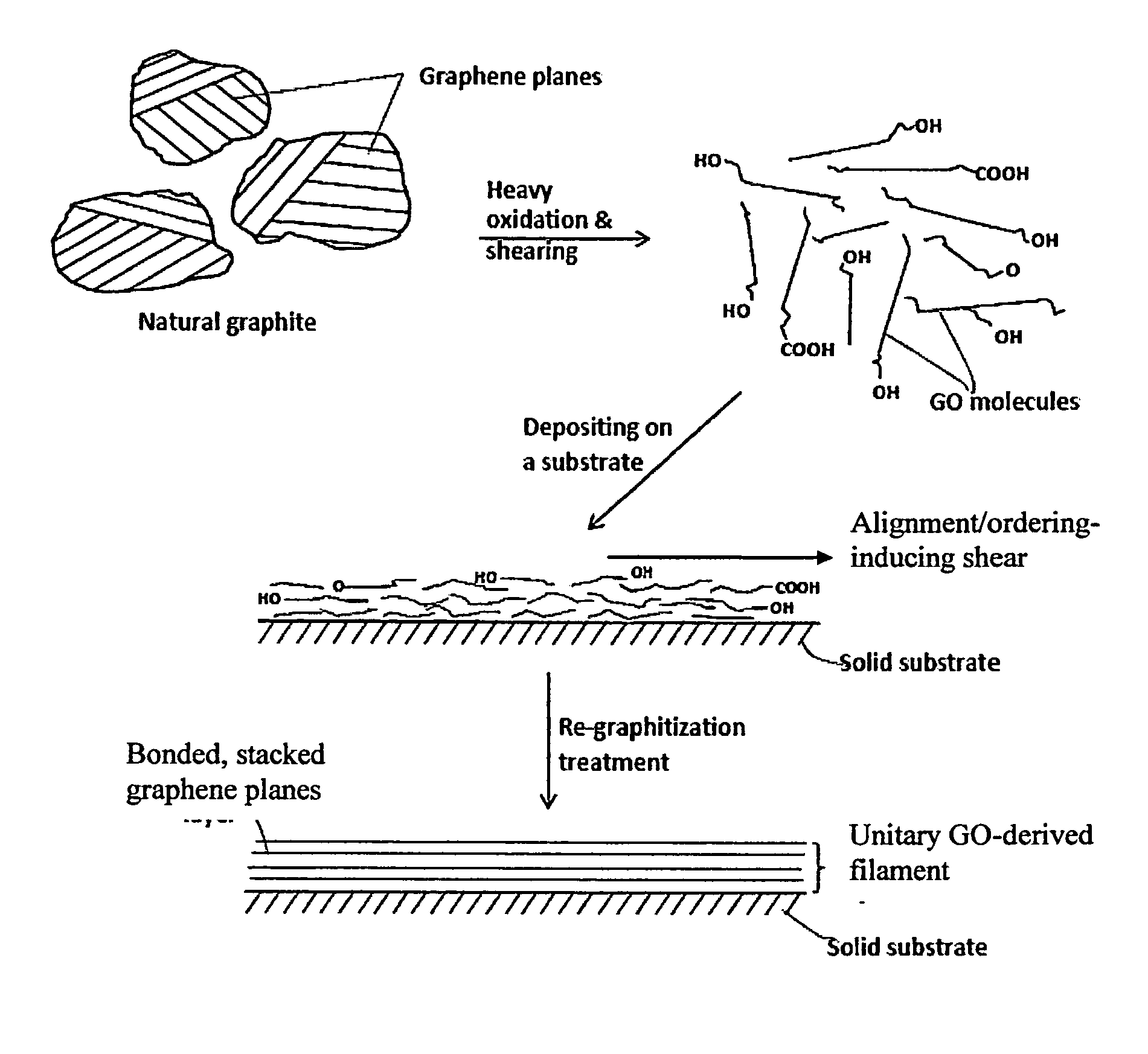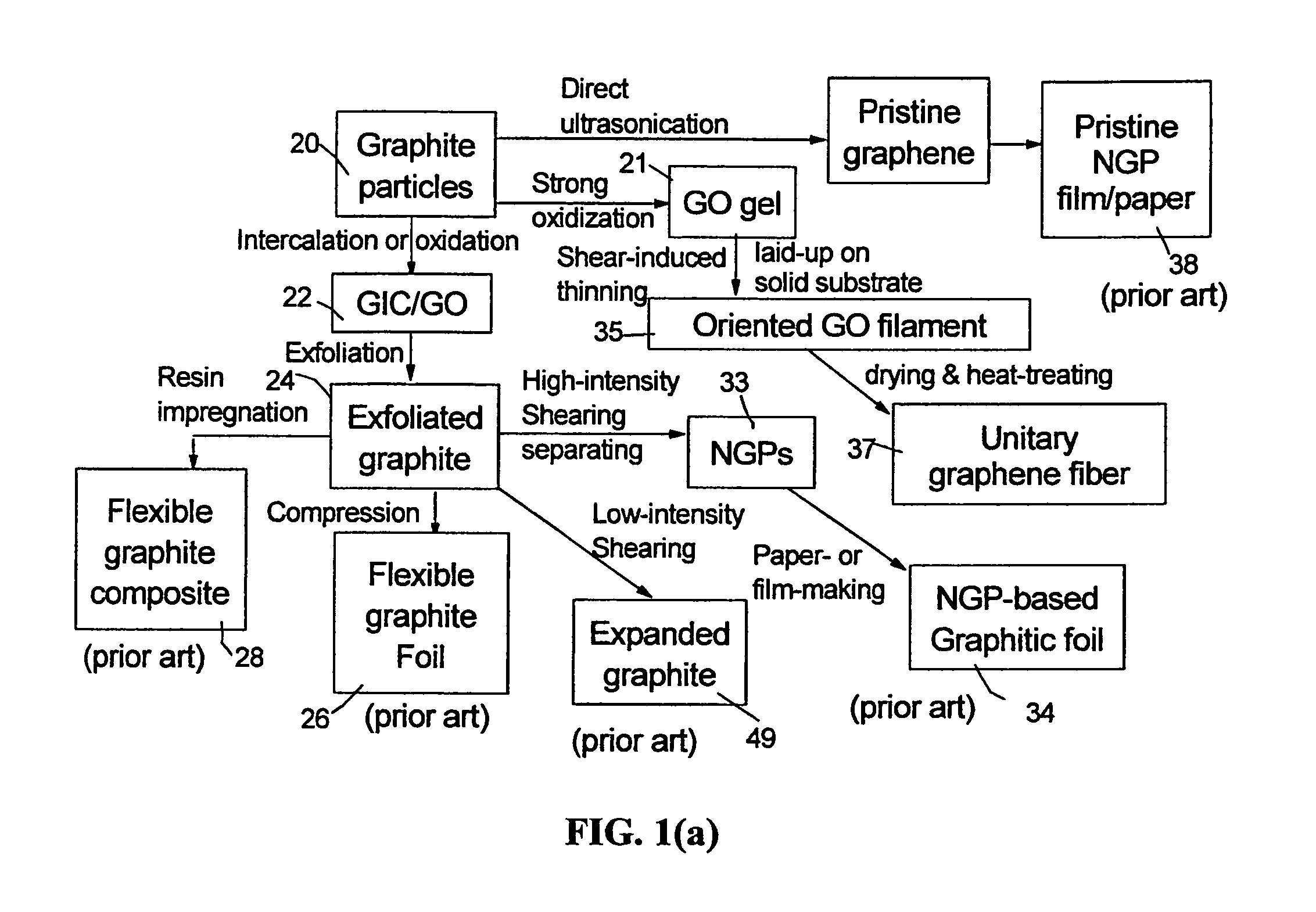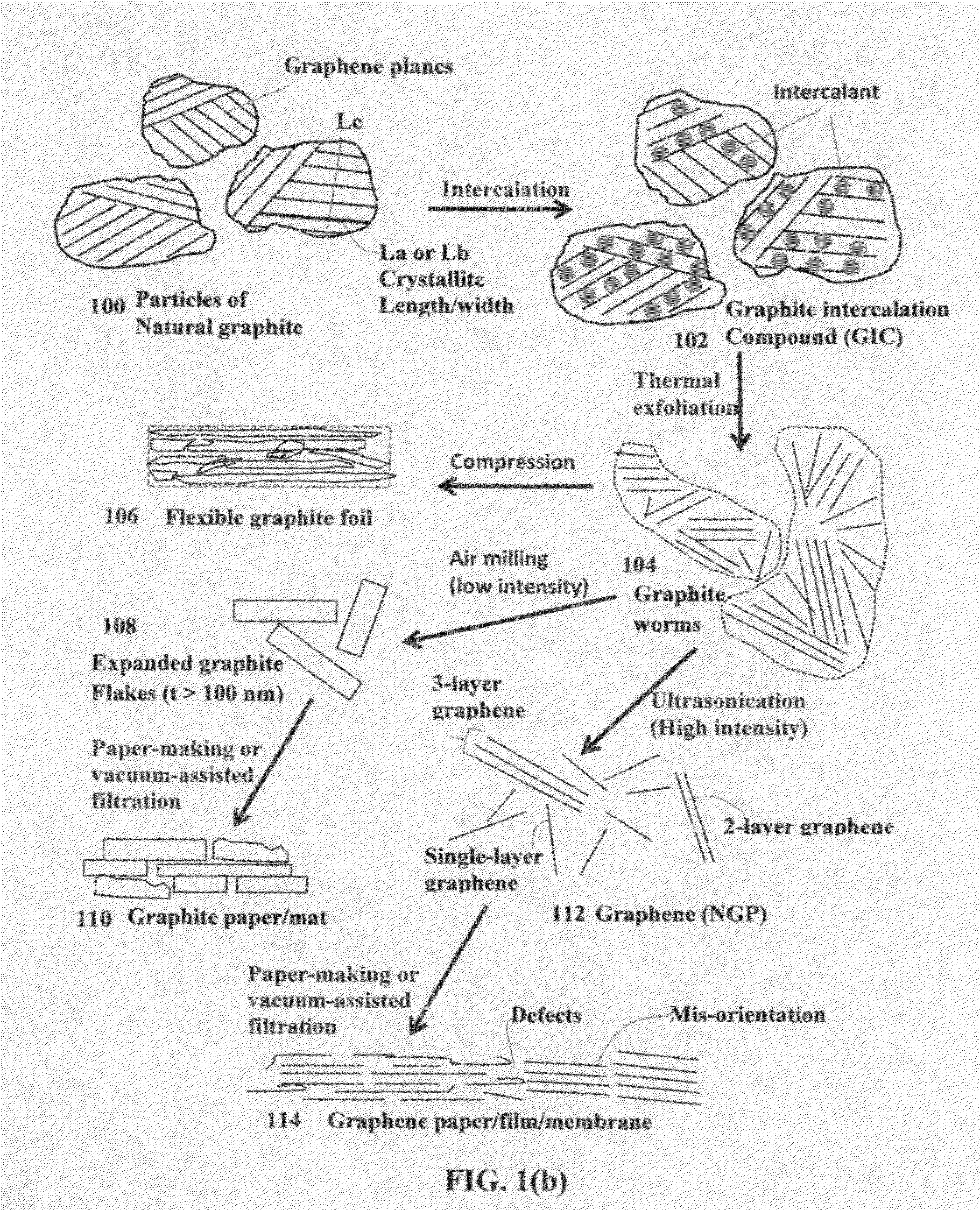Process for producing continuous graphitic fibers from living graphene molecules
a graphene molecule and graphene technology, applied in the field of graphite fibers, can solve the problems of inability to produce this type of large-size unitary graphene entity (fiber) from existing natural or synthetic graphite particles, difficult process, and high cost, and achieve the effect of reducing the viscosity of the go gel, effective shear stress, and strong shearing
- Summary
- Abstract
- Description
- Claims
- Application Information
AI Technical Summary
Benefits of technology
Problems solved by technology
Method used
Image
Examples
example 1
Preparation of Discrete Nano Graphene Platelets (NGPs)
[0142]Chopped graphite fibers with an average diameter of 12 μm and natural graphite particles were separately used as a starting material, which was immersed in a mixture of concentrated sulfuric acid, nitric acid, and potassium permanganate (as the chemical intercalate and oxidizer) to prepare graphite intercalation compounds (GICs). The starting material was first dried in a vacuum oven for 24 h at 80° C. Then, a mixture of concentrated sulfuric acid, fuming nitric acid, and potassium permanganate (at a weight ratio of 4:1:0.05) was slowly added, under appropriate cooling and stirring, to a three-neck flask containing fiber segments. After 16 hours of reaction, the acid-treated graphite fibers or natural graphite particles were filtered and washed thoroughly with deionized water until the pH level of the solution reached 6. After being dried at 100° C. overnight, the resulting graphite intercalation compound (GIC) was subjecte...
example 2
Preparation of Graphene Oxide (GO) Gel
[0144]In one example, graphite oxide gel was prepared by oxidation of graphite particles with an oxidizer liquid consisting of sulfuric acid, sodium nitrate, and potassium permanganate at a ratio of 4:1:0.05 at 30° C. When natural graphite (particle sizes of 14 μm) were immersed and dispersed in the oxidizer mixture liquid, the suspension or slurry appeared optically opaque and dark. The suspension remained opaque during the first 52 hours of reaction. However, the suspension gradually turned optically translucent (a little cloudy) when the reaction time exceeds 52 hours, and the color of the suspension changed from black to dark brown. After 96 hours, the suspension suddenly became an optically translucent solution with light brown color. The suspension was a solution, which appeared very uniform in color and transparency, indicating the absence of any dispersed discrete objects. The whole solution behaves like a gel, very similar to a typical ...
examples 3
Electrical and Thermal Conductivity Measurements of Various Graphene Oxide-Derived Unitary Graphene Fibers
[0154]Four-point probe tests were conducted on unitary graphene fibers and coagulation-derived graphene fibers. Their in-plane thermal conductivity was measured using a laser flash method (Netzsch Thermal Diffusivity Device).
[0155]FIG. 5 (a) and FIG. 5(b) show the thermal conductivity and electrical conductivity values, respectively, of the GO gel-derived unitary graphene-based continuous fibers and those of the fibers produced by spinning of GO suspension into a coagulation bath, all plotted as a function of the final heat treatment temperature. These data have clearly demonstrated the superiority of the unitary graphene-based fibers in terms of the achievable thermal conductivity and electrical conductivity at a given heat treatment temperature. All the prior art work on the preparation of continuous graphene fibers results in a simple aggregate or twisted stack of discrete gr...
PUM
| Property | Measurement | Unit |
|---|---|---|
| temperature | aaaaa | aaaaa |
| viscosity | aaaaa | aaaaa |
| viscosity | aaaaa | aaaaa |
Abstract
Description
Claims
Application Information
 Login to View More
Login to View More - R&D
- Intellectual Property
- Life Sciences
- Materials
- Tech Scout
- Unparalleled Data Quality
- Higher Quality Content
- 60% Fewer Hallucinations
Browse by: Latest US Patents, China's latest patents, Technical Efficacy Thesaurus, Application Domain, Technology Topic, Popular Technical Reports.
© 2025 PatSnap. All rights reserved.Legal|Privacy policy|Modern Slavery Act Transparency Statement|Sitemap|About US| Contact US: help@patsnap.com



